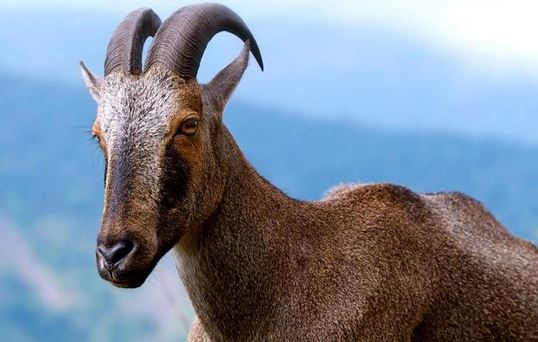Note4Students
From UPSC perspective, the following things are important :
Prelims level: National Endangered Species Day, Species mentioned in the news
Mains level: NA
Why in the News?
- National Endangered Species Day is an annual event that strives to raise awareness about the significance of safeguarding endangered species and their habitats.
- This year, National Endangered Species Day was celebrated on May 17.
What is National Endangered Species Day?
- National Endangered Species Day is observed every year on the 3rd Friday of May.
- This day was co-founded in 2006 by the Endangered Species Coalition and David Robinson.
- Robinson defines Endangered Species Day as a “worldwide day of action to rescue species and celebrate conservation triumphs”.
- Theme for 2024: “Celebrate Saving Species”.
- According to the IUCN Red List Analysis 2020, over 500 land animal species will likely go extinct in the next two decades if current trends continue.
Flagship species in India that are Endangered and often seen in the News:
Species
|
Conservation Status
|
Key Information
|
| Asian Elephant

|
- IUCN: Endangered
- CITES Appendix I;
- Schedule I (WPA, 1972)
|
- Symbol of Heritage: Plays a key role in forest and grassland ecosystems.
- Threats: Habitat loss, human-wildlife conflict, and poaching for tusks.
- Conservation Needs: Sustained efforts are crucial to ensure their survival and maintain biodiversity.
|
| Ganges River Dolphin

|
- IUCN: Endangered
- CITES: Appendix I;
- Schedule I (WPA, 1972)
|
- Critical Habitat: Found in the Ganges-Brahmaputra-Meghna and Karnaphuli-Sangu river systems.
- Challenges: Water extraction, pollution, and river traffic.
- Population Decline: Less than 2,000 individuals remain in India.
|
| Bengal Tiger

|
- IUCN: Endangered
- CITES Appendix I;
- Schedule I (WPA, 1972)
|
- Iconic Predator: Represents a significant part of India’s wildlife.
- Current Status: Numbers are increasing, but threats like poaching and habitat loss persist.
- Habitat: Found across varied ecosystems, from forests to mangroves.
|
| Red Panda

|
- IUCN: Endangered
- CITES: Appendix I
- Schedule I (WPA, 1972)
|
- Status: Significant decline due to habitat loss and poaching.
- Habitat Zones: Found in the eastern Himalayas and parts of Northeast India.
- Conservation Importance: Serves as an indicator species for the health of the Himalayan forests.
|
| Asiatic Lion

|
- IUCN: Endangered
- CITES: Appendix I
- Schedule I (WPA, 1972)
|
- Last Refuge: Exclusively found in Gir National Park, Gujarat.
- Population Challenges: Threats include poaching and accidental deaths from open wells and fences.
- Conservation Strategies: Involves habitat restoration and stricter anti-poaching laws.
|
| Nilgiri Tahr

|
- IUCN: Endangered
- Schedule I (WPA, 1972)
|
- Mountain Inhabitant: Lives in the mountainous regions of Kerala and Tamil Nadu.
- Population Pressure: Climate change and human interference are major threats.
- Survival Strategies: Requires focused conservation to stabilise its declining population.
|
| Lion-tailed Macaque

|
- IUCN: Endangered
- CITES Appendix I;
- Schedule I (WPA, 1972)
|
- Distinct Appearance: Notable for its silver mane, found in the Western Ghats.
- Critical Decline: Population affected by habitat fragmentation and human interaction.
- Behavioural Changes: Adjustments in their natural behaviours due to human activities are concerning.
|
| Great Indian Bustard (GIB)

|
- IUCN: Critically Endangered
- CITES Appendix I;
- Schedule I (WPA, 1972)
|
- IBs are the largest among India’s four bustard species and are considered flagship birds of grasslands.
- Habitat reduced to just 10 per cent.
- Overhead power transmission, poor vision, windmills, noise pollution, landscape changes, and alterations in cultivation patterns pose significant threats to GIBs.
|
| Golden Langur

|
- IUCN: Endangered
- CITES Appendix I;
- Schedule I (WPA, 1972)
|
- Approximately 7,396 Golden Langur (Trachypithecus geei) in India as per a census conducted by Assam Forest Department.
|
| Hangul (Kashmir Stag)

|
- IUCN: Critically Endangered
- CITES: Appendix I;
|
- Kashmir’s Hangul, a shy and endangered species of deer, has exhibited a robust breeding season, suggesting a hopeful future for its population in the Dachigam National Park.
- The Hanguls population could surpass 300 this spring, marking the first time in over 30 years.
|
PYQ:
[20I2] Which one of the following groups of animals belongs to the category of endangered species?
(a) Great Indian Bustard, Musk Deer, Red Panda and Asiatic Wild Ass
(b) Kashmir Stag, Cheetal, Blue Bull and Great Indian Bustard
(c) Snow Leopard, Swamp Deer, Rhesus Monkey and Saras (Crane)
(d) Lion-tailed Macaque, Blue Bull, Hanuman Langur and Cheetal |
Get an IAS/IPS ranker as your 1: 1 personal mentor for UPSC 2024
Attend Now










